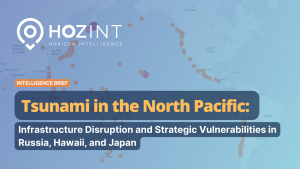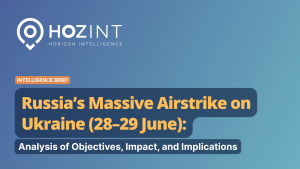Key Points
-
A 21-year-old former student conducted a mass shooting at a high school in Graz, Austria, killing ten people and injuring at least 12 others.
-
The attacker, who legally owned firearms, committed suicide at the scene.
-
Authorities have yet to determine a motive, but initial assessments suggest it was an isolated “rampage” rather than an ideologically motivated act.
-
Austria declared a three-day national mourning period, reflecting the gravity of the incident.
Event Overview
What: A mass shooting at a school in Graz, Austria, resulted in ten fatalities, including the perpetrator, and 12 injuries. The victims include both students and adults, though full identification is pending.
When: The attack occurred at approximately 10:00 a.m. on June 10, 2025.
Where: The incident took place at the BORG Dreierschützengasse high school in Graz, the capital of Styria province in southeastern Austria.
Who: The attacker was a 21-year-old Austrian male and a former student of the institution. His identity is not yet public, but officials clarified that he had not completed his schooling. The motive is currently unknown.
How: The assailant entered the school armed with a legally owned long gun and a handgun. He opened fire within the premises before committing suicide in a school restroom. Over 300 police officers responded to the incident, with crisis intervention teams deployed for uninjured students and parents.
Analysis
Austria has a relatively low rate of gun violence and mass shootings. The Graz school attack is therefore deeply anomalous in the Austrian context and has provoked national grief and political attention. Authorities, including Prime Minister of Styria Mario Kunasek and Federal President Frank-Walter Steinmeier, have labelled the incident a “national tragedy” and “incomprehensible.”
From a security and threat analysis perspective, this appears to be a case of a lone actor conducting a high-fatality shooting with legally acquired weapons. The lack of any immediate ideological, religious, or political motive suggests this is more akin to the rampage shootings seen in other Western countries, notably the United States. The Interior Minister explicitly stated that authorities could “only speculate” about the motive at this point.
This attack follows a broader European trend of sporadic, non-jihadist lone-wolf attacks involving mass violence in public or semi-public settings. According to our data, Europe has seen a rise in low-complexity, high-impact attacks involving knives and vehicles rather than firearms, which are more tightly regulated in Europe than in the US. However, Austria’s relatively liberal gun ownership laws may have been a factor in this case, as the perpetrator reportedly owned the weapons legally.
Precedents of Gun Violence in Austria
Though Austria is generally regarded as a safe country with low rates of violent crime, it has experienced several notable acts of gun and mass violence in recent decades. One of the most jarring incidents prior to the Graz shooting occurred in 2015, also in Graz, when a 26-year-old man launched a rampage by driving a vehicle into pedestrian areas before stabbing bystanders. Although this was not a shooting, it resulted in three deaths and more than 30 injuries. The attacker, an Austrian citizen, had a history of psychological instability and acted alone, echoing the pattern of isolated perpetrators found in similar incidents.
A more recent and explicitly ideologically motivated attack took place in Vienna in November 2020. A 20-year-old Austrian man, who had pledged allegiance to ISIS, carried out a shooting spree in the city centre, killing four people and injuring several others before being killed by police. This marked the deadliest terrorist shooting in Austria’s recent history and brought global attention to the threat of radicalisation within the country.
Another case occurred in 2013 in the town of Amstetten, where a 55-year-old man fatally shot three individuals during a dispute over business and property issues. Unlike the Vienna attack, this was rooted in personal grievance rather than ideological motives.
Taken together, these events demonstrate that while mass shootings in Austria are infrequent, the country is not immune to acts of extreme violence driven by either ideology or personal crisis. However, what distinguishes the recent Graz school shooting is its setting: violence within educational institutions in Austria is exceedingly rare. This contributes to the profound psychological and societal shock felt across the country in the wake of the tragedy.
Gun Laws in Austria
Austria maintains some of the most permissive gun laws in Western Europe, though they are considerably more regulated than those in the United States. Austrian law divides firearms into different categories based on type and intended use. Citizens aged 18 and older are eligible to own firearms, but the process varies depending on the classification of the weapon.
Handguns fall under Category B and require a firearms license. Applicants must provide a valid reason for ownership—typically for sport shooting, self-defence, or collecting purposes—and must undergo a psychological evaluation. These licenses must be renewed every five years. In contrast, hunting rifles and shotguns are classified as Category C weapons. These do not require the same level of justification for purchase, although buyers must still register the firearm with local police and pass a background check. A mandatory three-day waiting period is also imposed before acquisition.
Austria has one of the highest rates of civilian firearm ownership in Europe, with approximately 30 firearms per 100 residents. As of 2024, over one million registered firearms were held in a nation of just over nine million people. Despite this relatively high ownership rate, Austria has not seen widespread gun violence, which makes incidents like the Graz shooting particularly alarming.
Regulations around storage and public carriage of weapons are strict. Firearms must be stored securely, and carrying a loaded weapon in public is generally forbidden unless one has a special carry permit, which is difficult to obtain.
The Graz perpetrator legally owned both the long gun and the handgun used in the attack. This fact underscores a critical vulnerability in Austria’s current legal framework, namely, whether psychological assessments and background checks are sufficient, especially for younger applicants or individuals with known histories of school expulsion, social isolation, or behavioural issues. The case raises pressing questions about whether current safeguards are adequate to prevent lone-actor violence and whether stricter oversight or recurring mental health evaluations are warranted.
Forecast and Implications
Short-Term Outlook:
-
Increased security measures are likely across educational institutions nationwide, particularly in Styria.
-
The Ministry of Education and local authorities may initiate reforms on school safety protocols, emergency preparedness, and psychological support systems.
-
Political debate on gun control will likely intensify, especially concerning mental health evaluations in the licensing process.
Medium to Long-Term Outlook:
-
Austria may revise firearm ownership laws or increase the scrutiny of mental health history in the licensing process.
-
Similar to the aftermath of the 2015 Graz vehicle attack, this incident will likely prompt a reevaluation of lone-actor threat indicators.
-
As seen after school shootings in Germany (Erfurt 2002, Winnenden 2009), there may be a push for increased surveillance, psychological vetting, and social media monitoring among youth populations considered at-risk.
Conclusion
The Graz school shooting is a stark reminder that even relatively peaceful societies like Austria are not immune to acts of extreme violence. With national mourning declared and flags lowered to half-mast, this incident has profoundly shaken Austrian society. While a motive is still unknown, the attacker’s background as a former student with legal access to firearms points to broader issues of access control, mental health, and youth disengagement. The national and EU-level response will likely shape not just gun policy but also strategies for preventing youth-led violence in educational settings.




